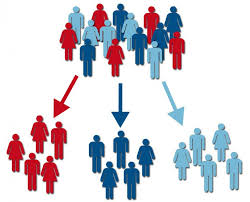These days SQL is a must have skill for marketers and marketing analysts. Data is everywhere but access to that data is still a challenge.
Marketers and Marketing Analysts generally depend on the tools or IT department to help them pull the data for marketing purposes. IT leaves you hanging because they have other priorities as a results Marketing Analysts have to know how to write SQL on their own so that they are not dependent on IT. No SQL means no data and no data means no insights.
This course is for those marketers who would like to know how to use SQL to conduct their marketing analysis.
If you are trying for a job as a Marketing Analysts then this course is a must for you. This will help your resume shine and put you ahead of other similar candidates. The more you can handle technology and data these days the better it differentiates you from the rest of the pack.
The course uses mySQL to show how SQL works but all the leanings and most of the scripts are also applicable to other databases such Microsoft SQL Server and Oracle.
You can get this course for only $10, limited quantity at Get SQL course for only $10 (let me know if the coupon is all sold out). Over 1000 students have already taken this course.
My other courses that are currently available online:

Marketers and Marketing Analysts generally depend on the tools or IT department to help them pull the data for marketing purposes. IT leaves you hanging because they have other priorities as a results Marketing Analysts have to know how to write SQL on their own so that they are not dependent on IT. No SQL means no data and no data means no insights.
This course is for those marketers who would like to know how to use SQL to conduct their marketing analysis.
If you are trying for a job as a Marketing Analysts then this course is a must for you. This will help your resume shine and put you ahead of other similar candidates. The more you can handle technology and data these days the better it differentiates you from the rest of the pack.
The course uses mySQL to show how SQL works but all the leanings and most of the scripts are also applicable to other databases such Microsoft SQL Server and Oracle.
You can get this course for only $10, limited quantity at Get SQL course for only $10 (let me know if the coupon is all sold out). Over 1000 students have already taken this course.
My other courses that are currently available online:
- How to start a career in Digital and Web Analytics (Udemy: $10, or Global Analytics Academy for Free)
- A/B Testing and Experimentation for Websites and Marketing
- Web Analytics Under the Hood - A must have for Web Analysts (contact me for details)
- Google Tag Manager (only available for organizations)





